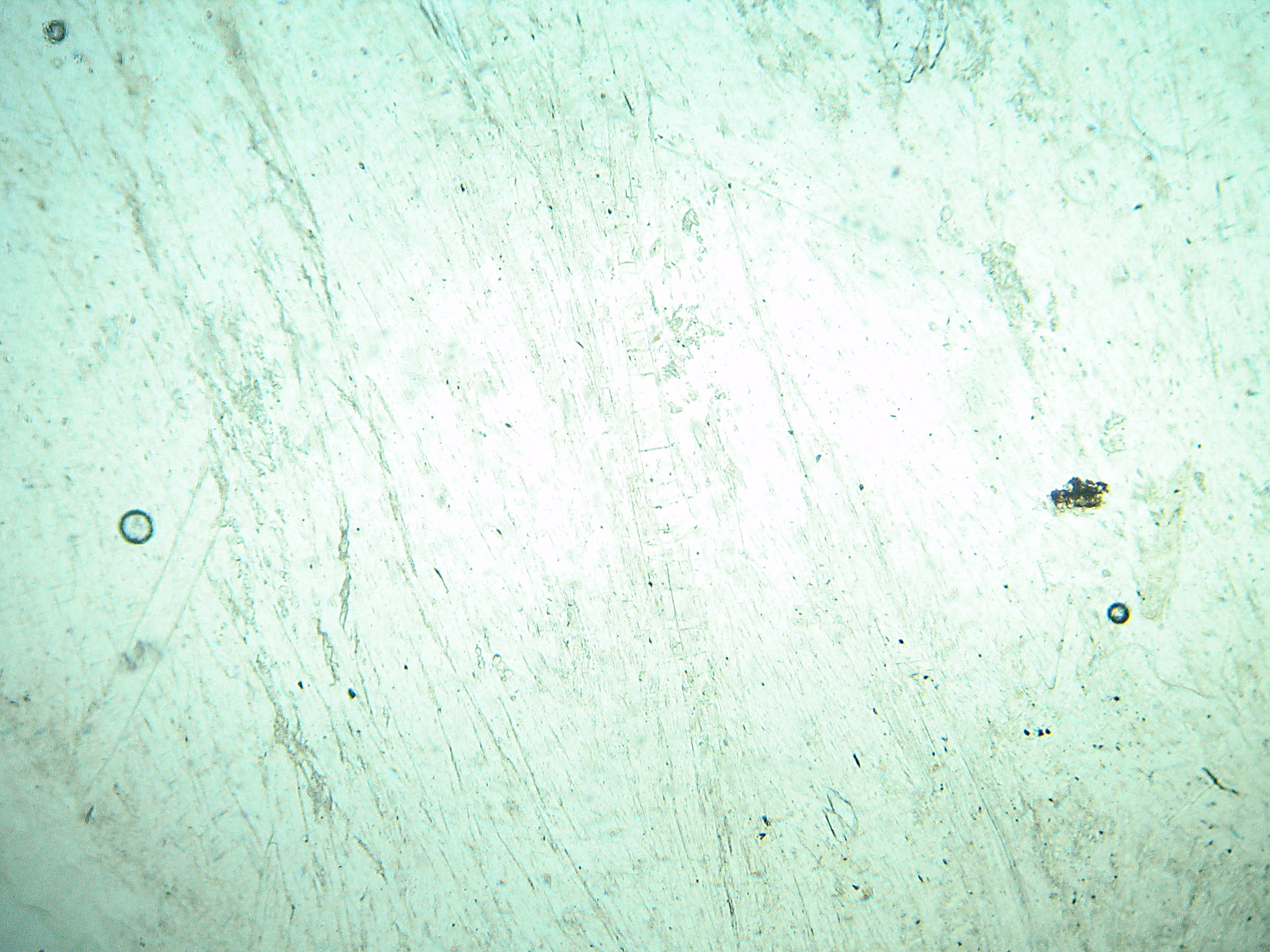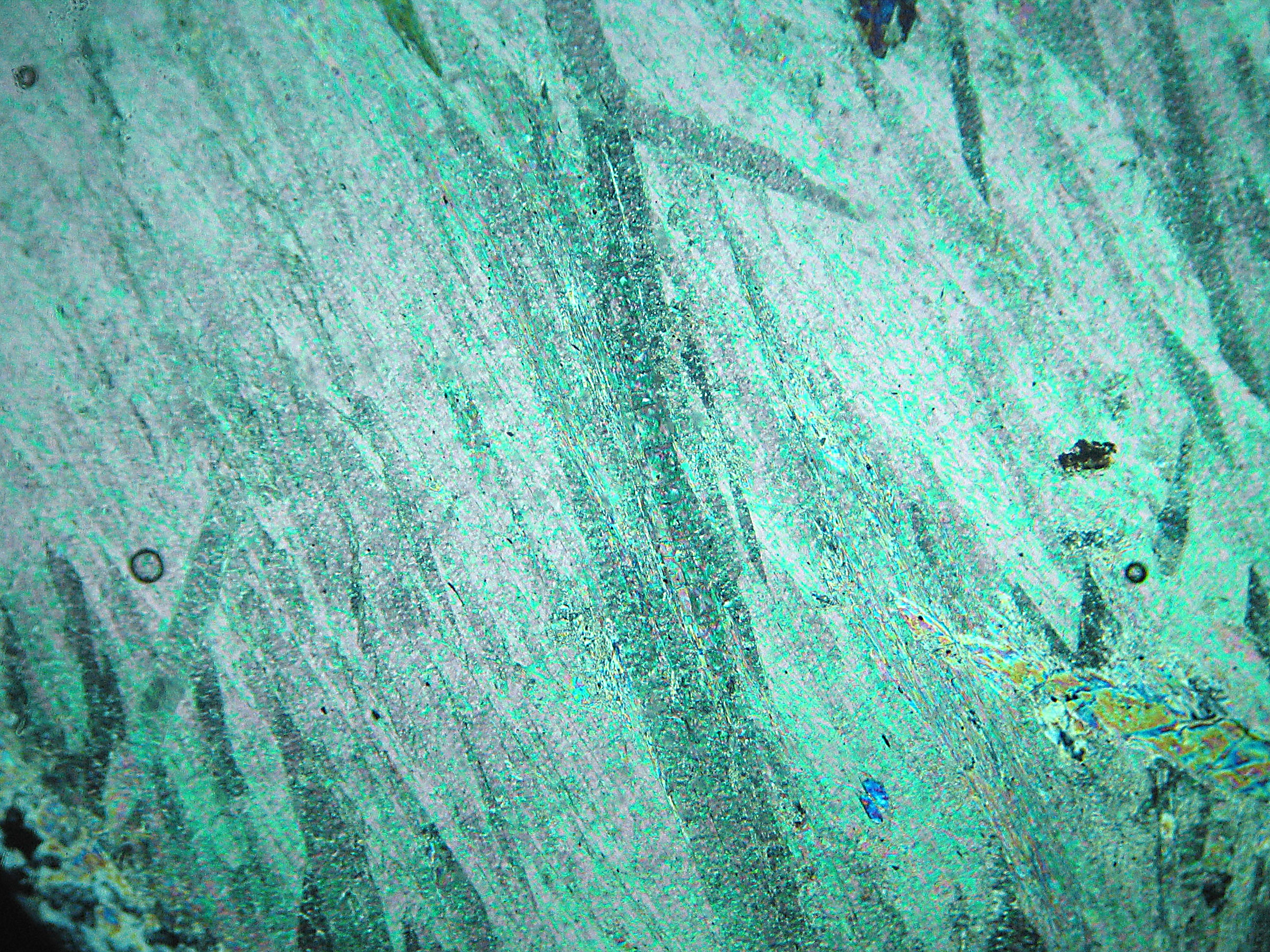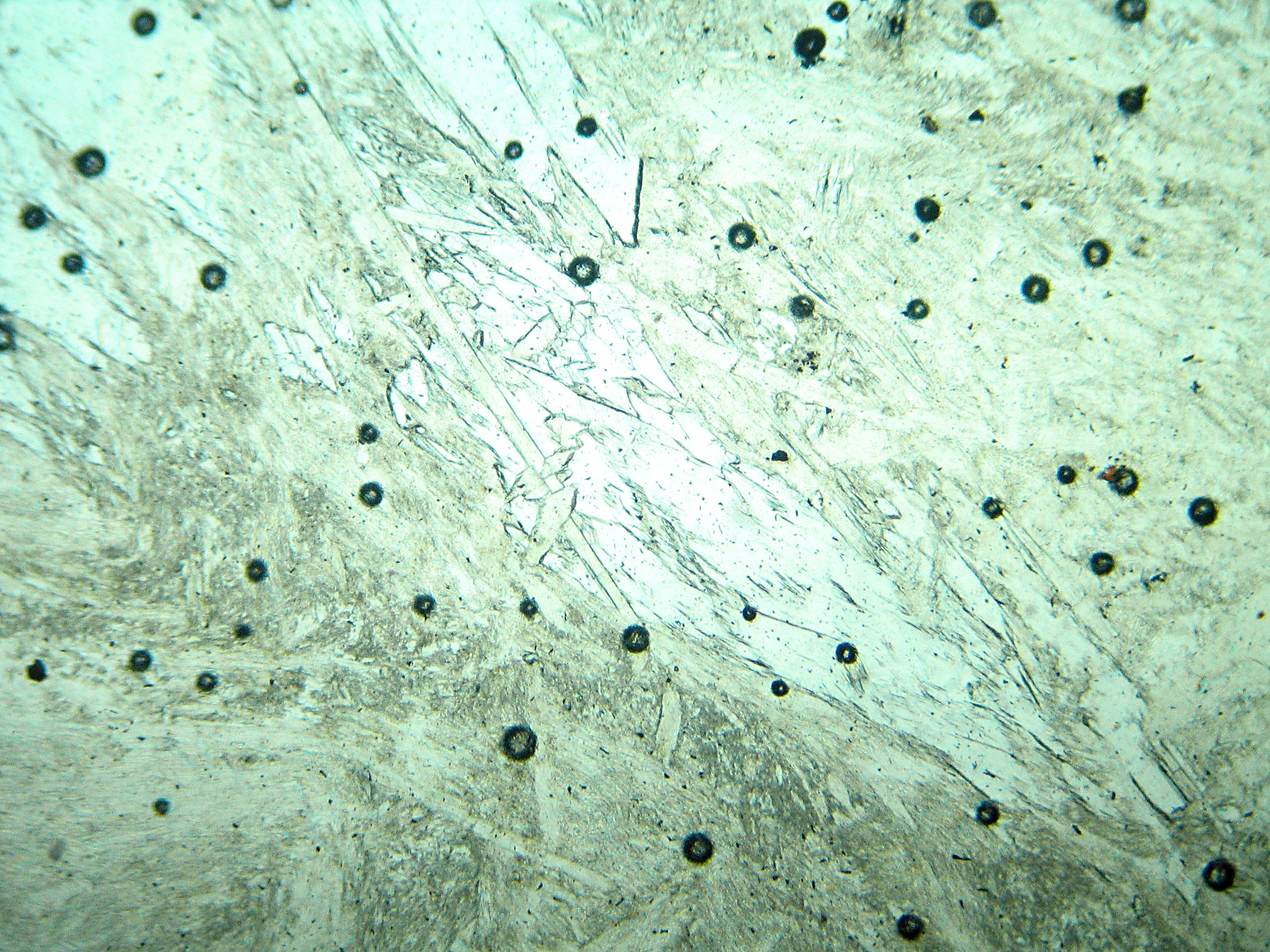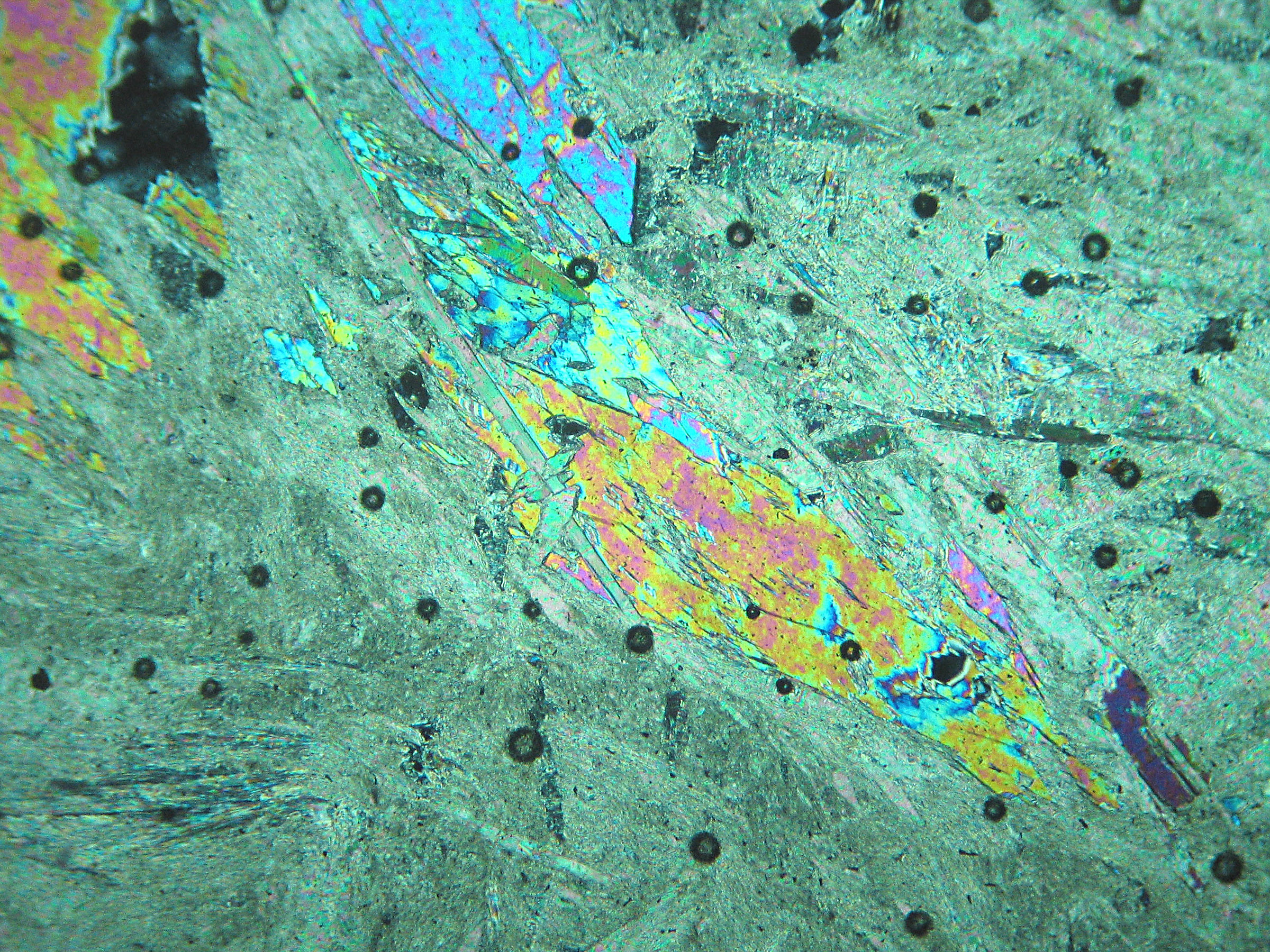Talc in a Serpentenite (Verde Antique)
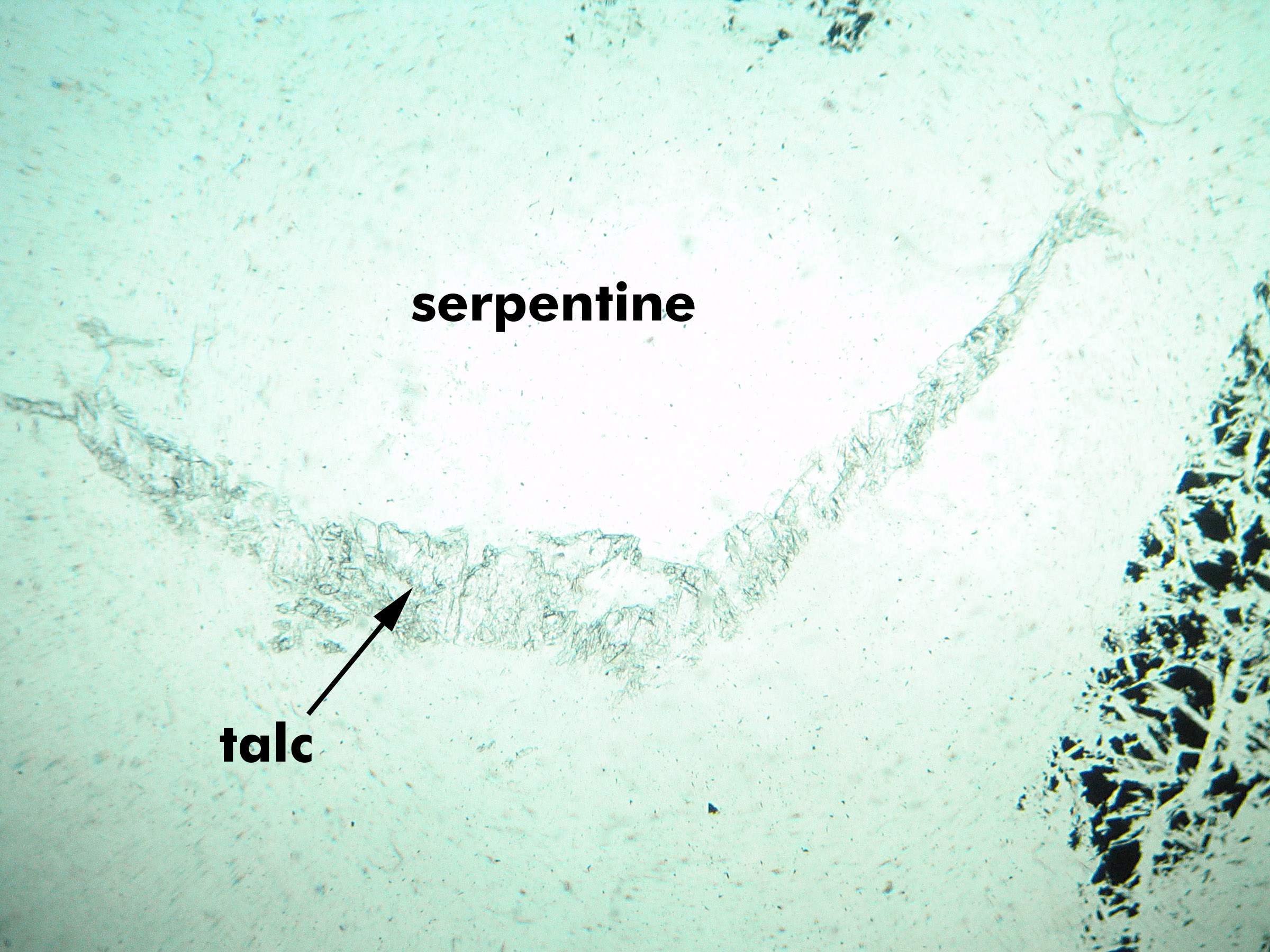
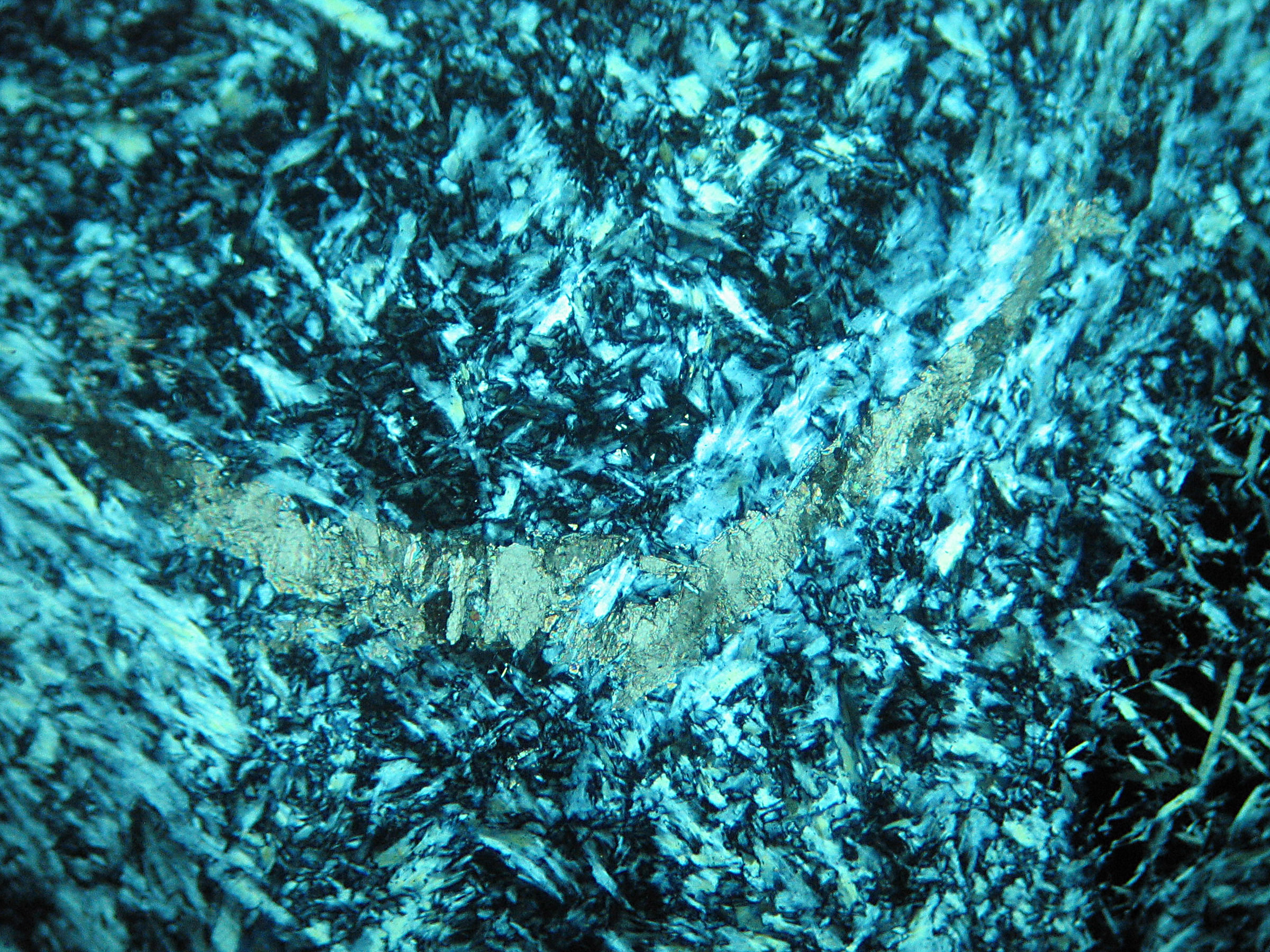
This photomicrograph, about 2 mm across,
is of a serpentenite from Windsor County, Vermont. Most of the
photo shows antigorite (serpentine;
clear to light green PP, 1st order interference
colors XP). The material forming a sickle-shaped patch near
the center, showing higher relief and
very high order interference colors,
is talc. Some patchy magnetite (opaque)
can be seen near the right edge.
